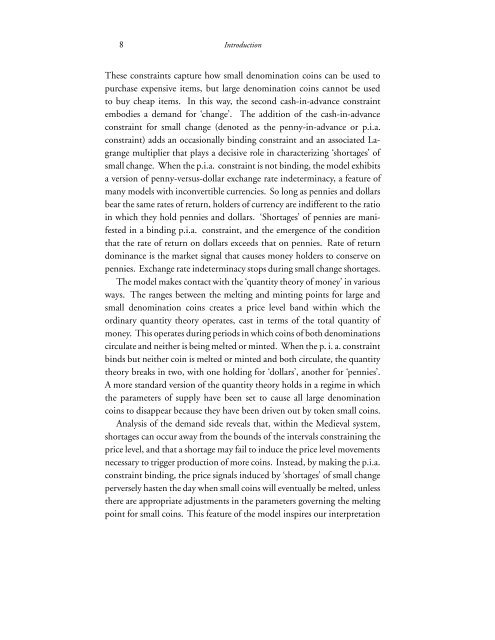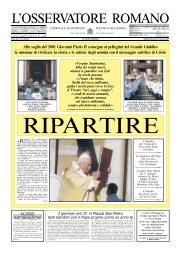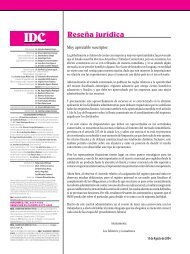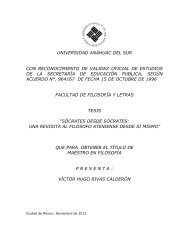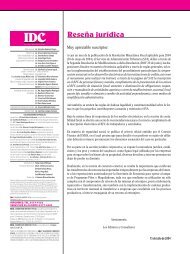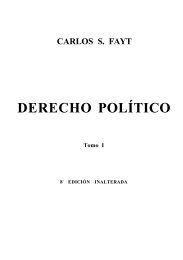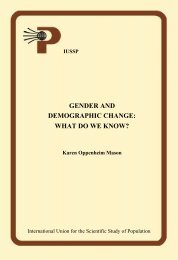The Evolution of Small Change: Beliefs, Experiments, and ...
The Evolution of Small Change: Beliefs, Experiments, and ...
The Evolution of Small Change: Beliefs, Experiments, and ...
You also want an ePaper? Increase the reach of your titles
YUMPU automatically turns print PDFs into web optimized ePapers that Google loves.
8 Introduction<br />
<strong>The</strong>se constraints capture how small denomination coins can be used to<br />
purchase expensive items, but large denomination coins cannot be used<br />
to buy cheap items. In this way, the second cash-in-advance constraint<br />
embodies a dem<strong>and</strong> for ‘change’. <strong>The</strong> addition <strong>of</strong> the cash-in-advance<br />
constraint for small change (denoted as the penny-in-advance or p.i.a.<br />
constraint) adds an occasionally binding constraint <strong>and</strong> an associated Lagrange<br />
multiplier that plays a decisive role in characterizing ‘shortages’ <strong>of</strong><br />
small change. When the p.i.a. constraint is not binding, the model exhibits<br />
a version <strong>of</strong> penny-versus-dollar exchange rate indeterminacy, a feature <strong>of</strong><br />
many models with inconvertible currencies. So long as pennies <strong>and</strong> dollars<br />
bear the same rates <strong>of</strong> return, holders <strong>of</strong> currency are indifferent to the ratio<br />
in which they hold pennies <strong>and</strong> dollars. ‘Shortages’ <strong>of</strong> pennies are manifested<br />
in a binding p.i.a. constraint, <strong>and</strong> the emergence <strong>of</strong> the condition<br />
that the rate <strong>of</strong> return on dollars exceeds that on pennies. Rate <strong>of</strong> return<br />
dominance is the market signal that causes money holders to conserve on<br />
pennies. Exchange rate indeterminacy stops during small change shortages.<br />
<strong>The</strong> model makes contact with the ‘quantity theory <strong>of</strong> money’ in various<br />
ways. <strong>The</strong> ranges between the melting <strong>and</strong> minting points for large <strong>and</strong><br />
small denomination coins creates a price level b<strong>and</strong> within which the<br />
ordinary quantity theory operates, cast in terms <strong>of</strong> the total quantity <strong>of</strong><br />
money. This operates during periods in which coins <strong>of</strong> both denominations<br />
circulate <strong>and</strong> neither is being melted or minted. When the p. i. a. constraint<br />
binds but neither coin is melted or minted <strong>and</strong> both circulate, the quantity<br />
theory breaks in two, with one holding for ‘dollars’, another for ‘pennies’.<br />
A more st<strong>and</strong>ard version <strong>of</strong> the quantity theory holds in a regime in which<br />
the parameters <strong>of</strong> supply have been set to cause all large denomination<br />
coins to disappear because they have been driven out by token small coins.<br />
Analysis <strong>of</strong> the dem<strong>and</strong> side reveals that, within the Medieval system,<br />
shortages can occur away from the bounds <strong>of</strong> the intervals constraining the<br />
price level, <strong>and</strong> that a shortage may fail to induce the price level movements<br />
necessary to trigger production <strong>of</strong> more coins. Instead, by making the p.i.a.<br />
constraint binding, the price signals induced by ‘shortages’ <strong>of</strong> small change<br />
perversely hasten the day when small coins will eventually be melted, unless<br />
there are appropriate adjustments in the parameters governing the melting<br />
point for small coins. This feature <strong>of</strong> the model inspires our interpretation


